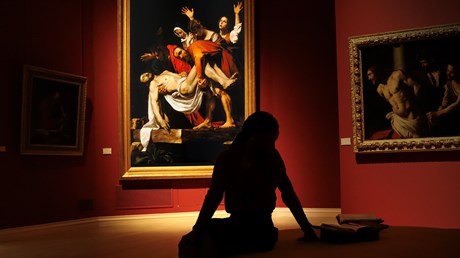As the world reels from yet another school shooting, we can find a refuge in the Bible on canvas.

As a pastor serving a local church near my alma mater, Michigan State, I was invited to stand at a listening post along with comfort dogs the day after last month’s shooting.
Campus was unnervingly empty as yellow barricade tape flapped in the breeze, restricting our access to the buildings. Clusters of candles marked where each of the three victims had died—while a lone undergraduate student ran back and forth with a lighter trying, hopelessly, to keep them all lit.
Although campus was devoid of students, it was thronging with media crews and reporters. Everyone who was usually on campus had gone home to mourn, while those from outside had come in to gaze at us through their camera lenses and television screens—inviting the public eye to witness private moments of pain and hurt in our community.
A similar spectacle is playing out right now at the Covenant Christian School in Nashville, Tennessee—as it has at schools in Uvalde, Texas; Oxford, Michigan; and MSU. And the same scene will play out at the next mass shooting, an occurrence that seems mercilessly inevitable.
There is something real and peculiar about the human fascination with looking at pain and hurt, crisis and tragedy. For centuries, people have made pilgrimages to the theater to watch Hamlet hold up a skull or to see the misfortunes that befell Desdemona, Emilia, Roderigo, and Othello. More commonly, the highway becomes a stage whenever traffic slows to stare at a car accident.
Tragedy is magnetizing. And yet, it can also be healing. In times of personal pain and hurt, I have found solace in religious art depicting tragedy. It has helped me contemplate the raw pain of human life.
When my wife and I experienced multiple miscarriages, William-Adolphe ...
from Christianity Today Magazine
Umn ministry


.gif)

.gif)
.gif)
